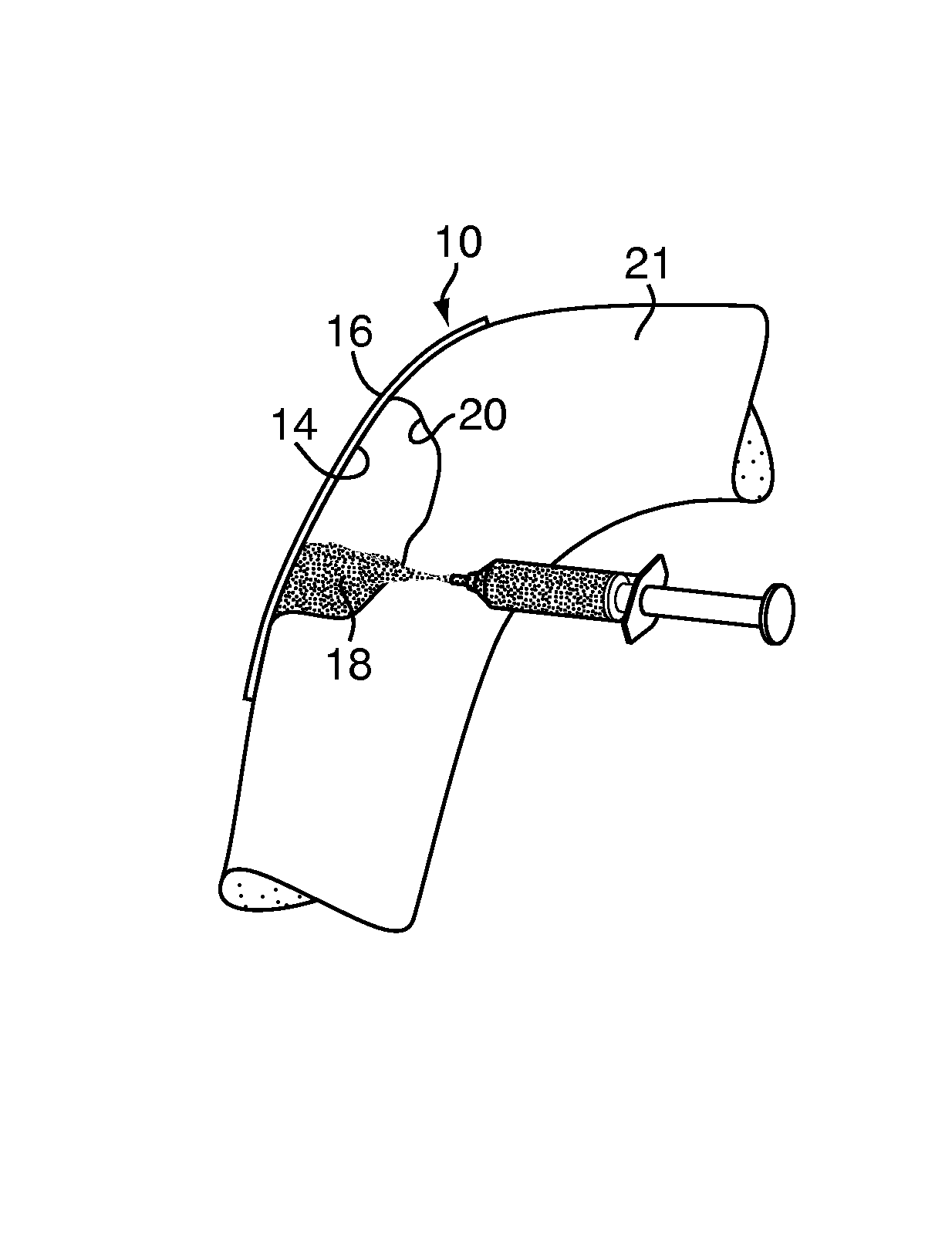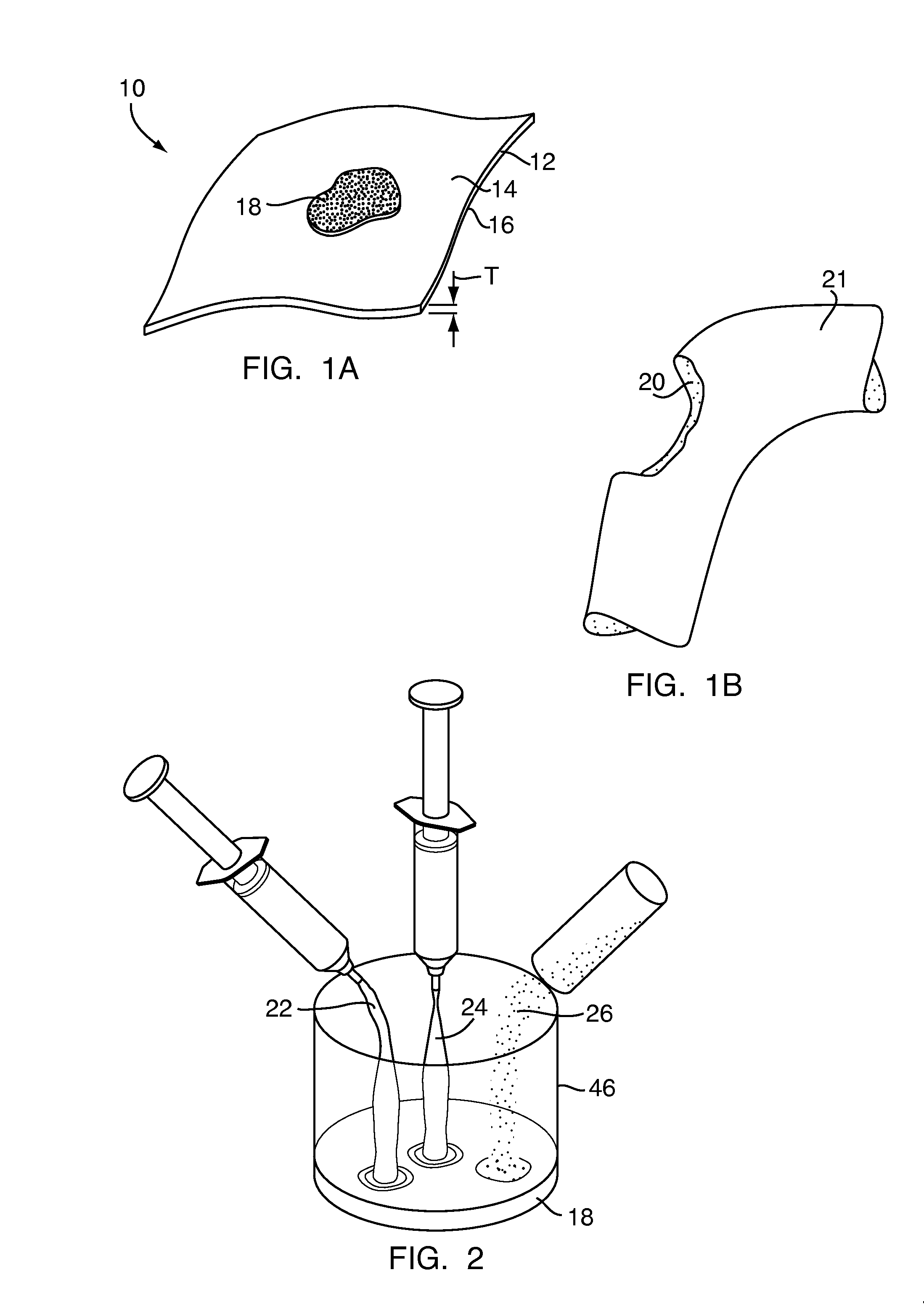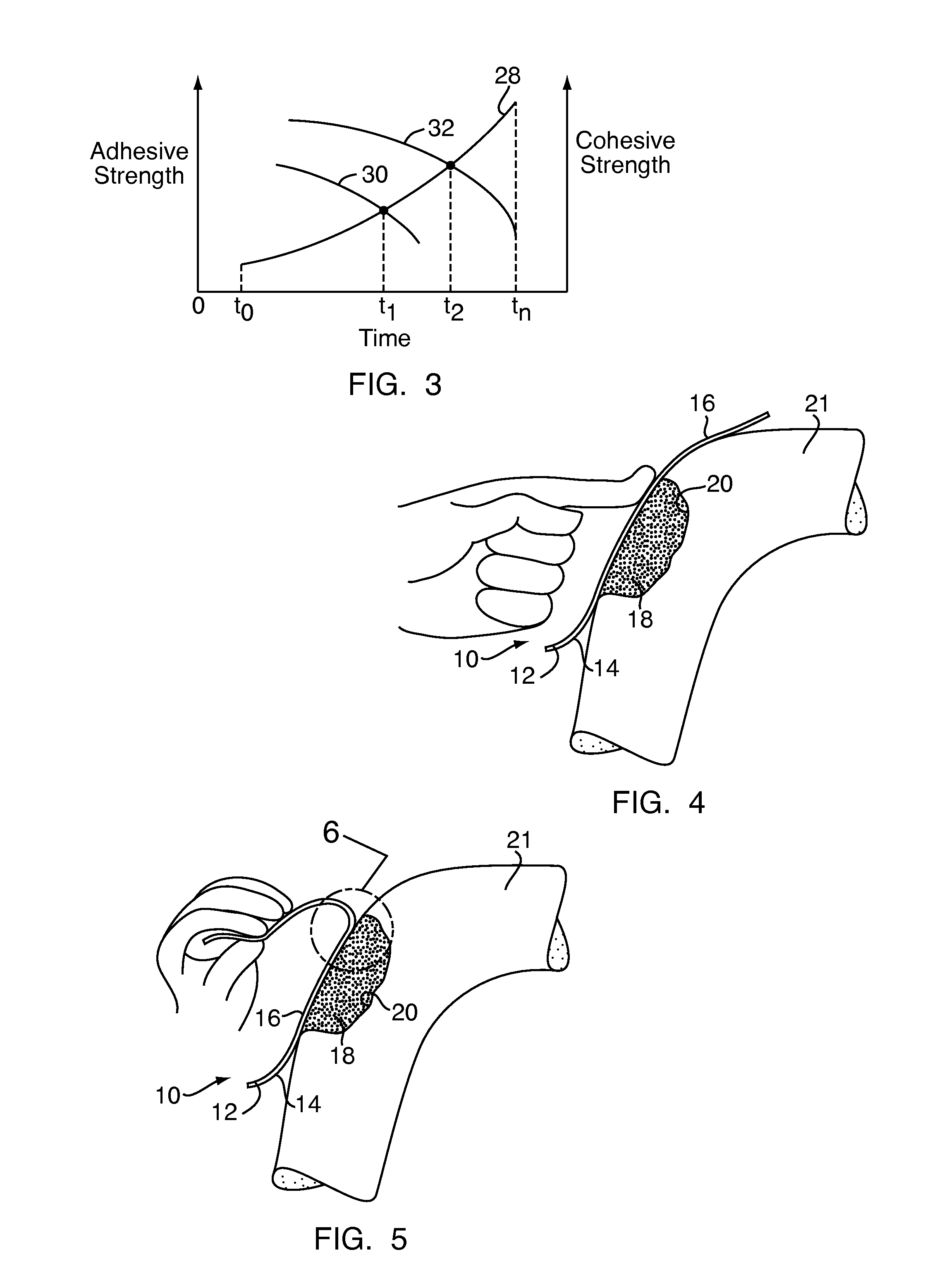Method and device for handling bone adhesives
a technology of adhesives and bone, applied in the field of bone adhesives, can solve the problems of cracks that must be filled or in a portion of missing bone that must be replaced, removal of a portion of bone also requiring replacement, conventional synthetic bone defect fillers, etc., and achieves the effects of reducing surface energy, reducing adhesion, and pliable or rigid
- Summary
- Abstract
- Description
- Claims
- Application Information
AI Technical Summary
Benefits of technology
Problems solved by technology
Method used
Image
Examples
Embodiment Construction
[0036]Referring to FIG. 1A, a bone adhesive application device in the form of a low surface energy (LSE) sheet 10 includes a pliable structure 12 having an application surface 14 and a manipulation surface 16. The pliable structure 12 has thickness T that may be varied depending upon the desired degree of flexibility of the pliable structure 12, as will be discussed in greater detail below. The application surface 14 is adapted to receive a bone adhesive 18, which is to be applied to a bone defect 20, shown in FIG. 1B, in a patient's bone 21, shown in FIG. 1B. The bone adhesive 18 is preferably formed from a reactive biocompatible polymeric material, which has adhesive characteristics to provide a bond with the bone 21, shown in FIG. 1B. The LSE sheet 10 improves handling of the adhesive bone adhesive 18, so that the bone adhesive 18 may be more readily applied to the bone defect 20, shown in FIG. 1B.
[0037]As discussed above, the bone adhesive 18 is preferably a reactive biocompatib...
PUM
 Login to View More
Login to View More Abstract
Description
Claims
Application Information
 Login to View More
Login to View More - R&D
- Intellectual Property
- Life Sciences
- Materials
- Tech Scout
- Unparalleled Data Quality
- Higher Quality Content
- 60% Fewer Hallucinations
Browse by: Latest US Patents, China's latest patents, Technical Efficacy Thesaurus, Application Domain, Technology Topic, Popular Technical Reports.
© 2025 PatSnap. All rights reserved.Legal|Privacy policy|Modern Slavery Act Transparency Statement|Sitemap|About US| Contact US: help@patsnap.com



